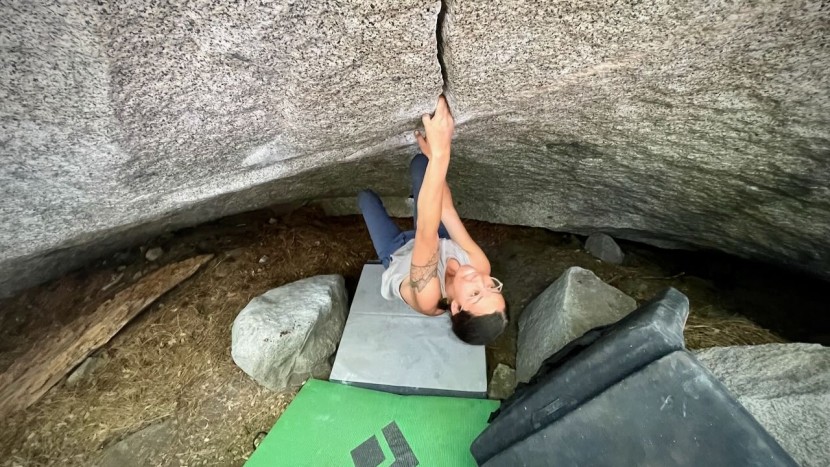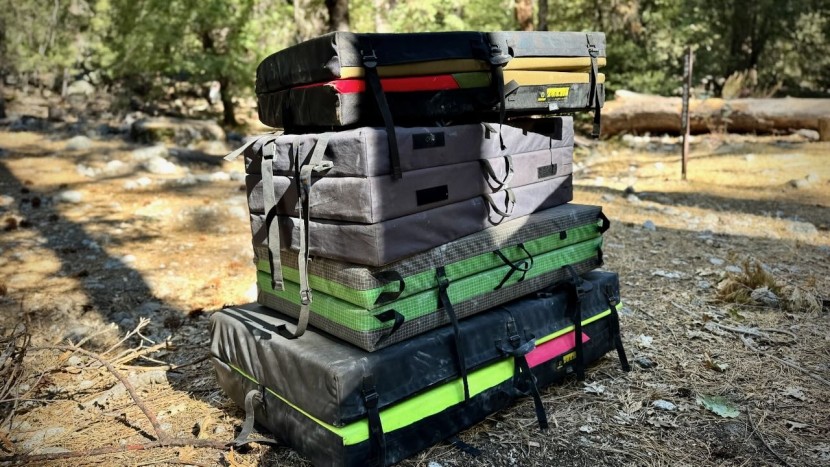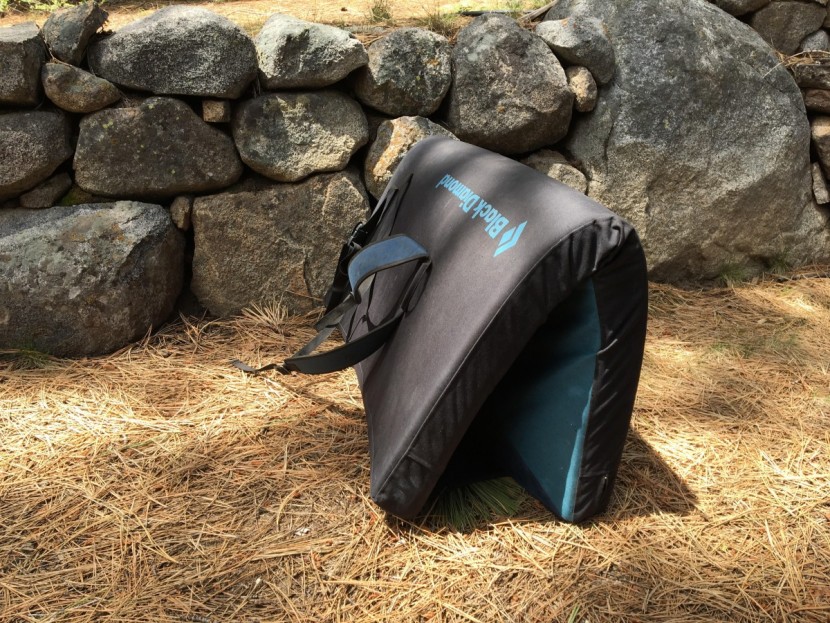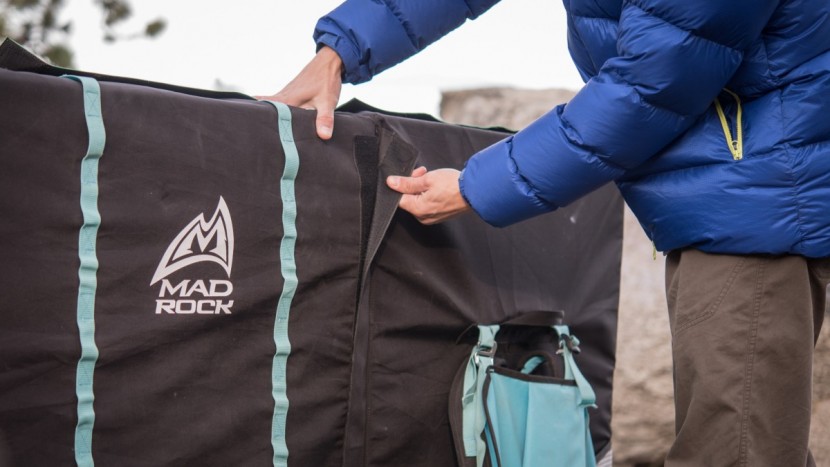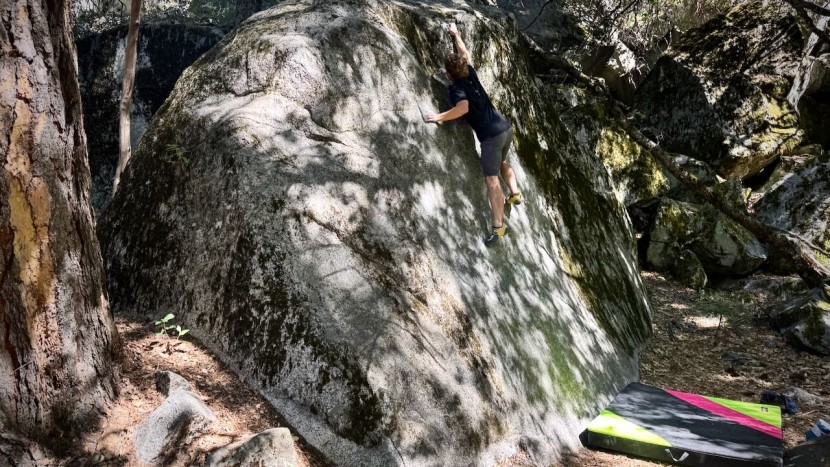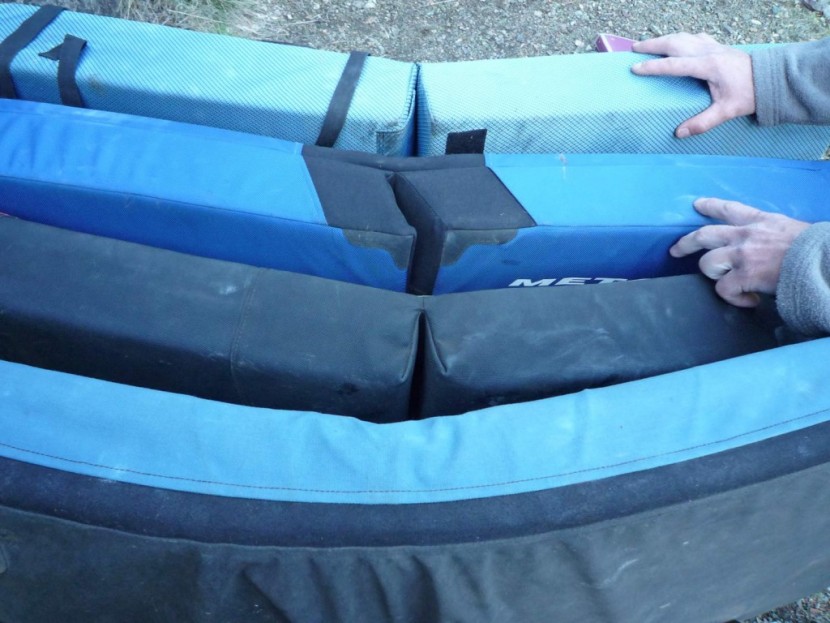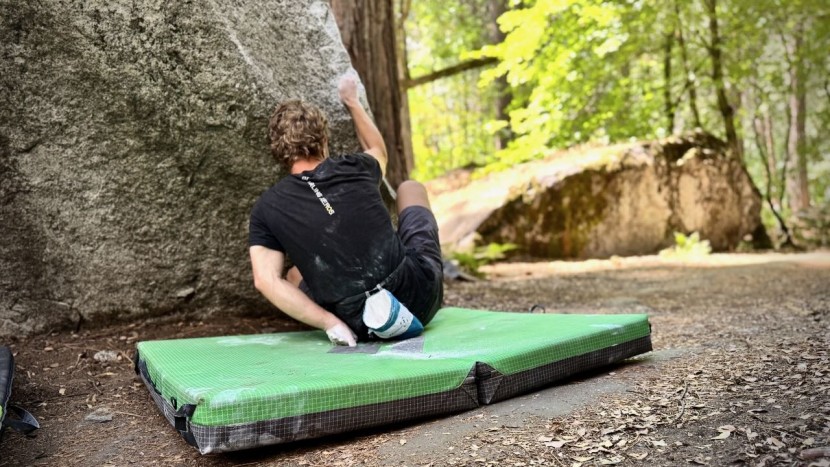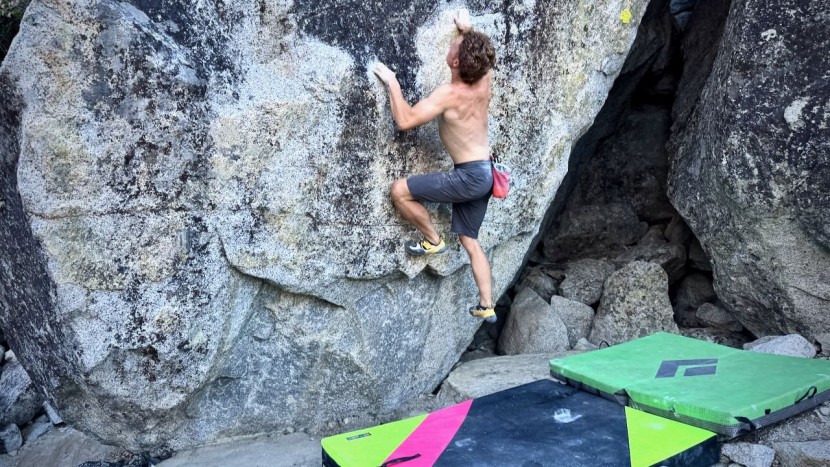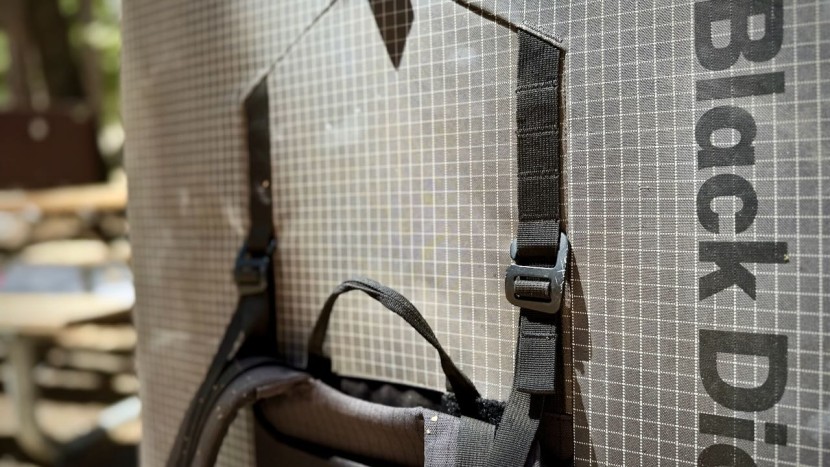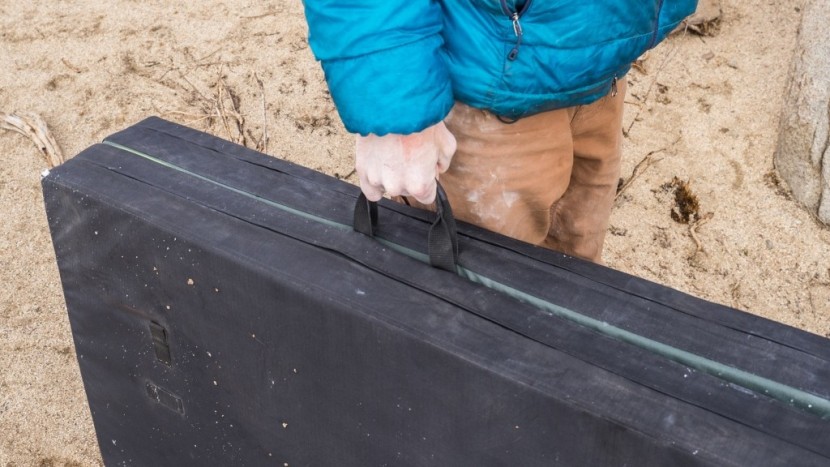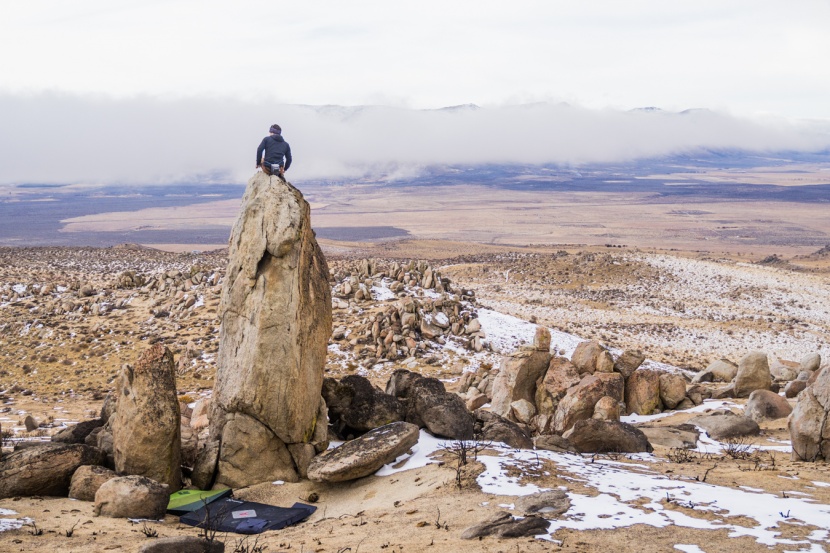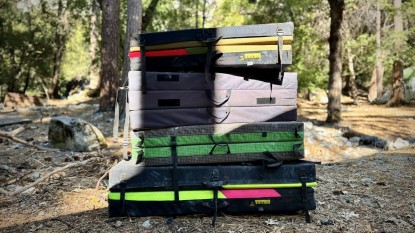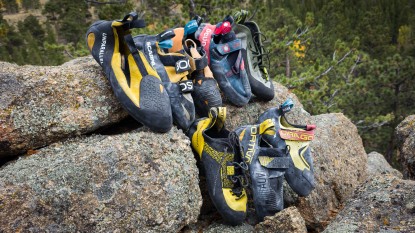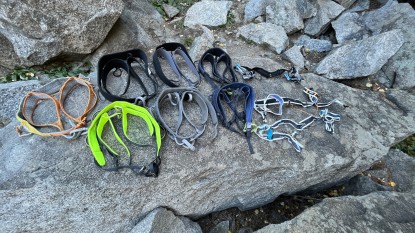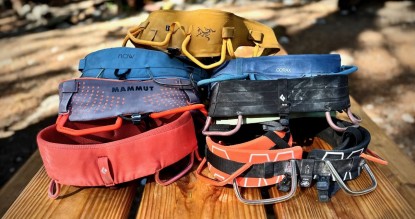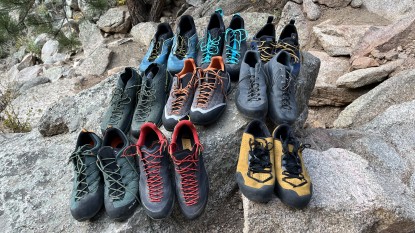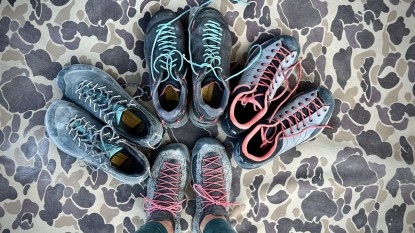While bouldering continues to gain popularity, little has changed in the overall design of the basic crash pad. It's still a rectangle-shaped nylon shell stuffed with foam and some straps sewn on so you can carry it like a backpack while the uninitiated ask you what exactly you plan to do with that mattress on your back once you've carried it out into the woods. However, designs have been refined over the years to provide better impact protection, more comfortable suspension, and added durability.
Pad Size
A beginner (or a parent trying to save some money and storage space) may ask, “Do I really need a huge pad?” while an experienced and dedicated boulderer may go straight for the oversized pad almost every time. There are two main pad sizes: medium pads are about 3 x 4 feet, and large pads are about 4 x 5 feet or 4 x 6 feet. There are also much smaller pads, but we don't typically recommend these unless you can afford a giant quiver of pads.
Choosing pad size is easy if you have a big truck or van and a healthy budget: get all sizes of pads, pull up to the boulders, and assess your needs. For the rest of us, there are big trade-offs: bigger pads are much harder to transport in a small car, are more expensive, heavier, and harder to hike with through tight trails and boulders. Smaller pads are easier to travel with but offer a smaller landing area. Sure, you can stack smaller pads, but it means managing many more seams where the pads meet. In general, when you start out, it is good to get a smaller pad because it will be versatile. Once you are bouldering more often, you will likely want a big pad (and wonder how you ever bouldered with just one small pad).
Taco, Hinge, Hybrid, and Baffled Designs
There are a lot of small differences in bouldering pads and two big ones: the foam they use and how they deal with folding into a backpack. To the folding question, there are a few options: taco, hinge, hybrid, and baffled.
Taco
The taco-style is a continuous piece of foam that folds in two and makes a taco shape. The upside is there no hinge that could fail on uneven terrain. The downside is that it does not fold flat to lay on the ground or store well. Storing the pad in the folded configuration will lead to the foam at the folding point breaking down more quickly and make it more difficult for the pad to lay flat. We're seeing this design used less and less in newer pads coming to the crash pad market.
The taco type designs hold the pad (in pack mode) with a slight tilt or twist. It is not really a big problem, but it feels a little awkward sometimes, especially if the pad is heavily loaded. The hinged pads make a nice flat backside in backpack mode and carry the loads well, albeit a usually smaller amount of stuff than the easily loadable tacos.
Hinge
The hinge style has a crease in the middle of the pad created by cutting the foam into two sections. The upside is that it does fold flat to lay on the ground or to store it. The downside is that the hinge could fail on uneven terrain. If you're rocketing to the ground with one leg pointed down like a missile at the folding point, there's a chance the pad could fold under you, and your foot would be subject to a more harsh impact with the ground in this weak-point in the pad's foam.
On perfectly flat and even surfaces, the hinge styles are a little better because they lay flat and are less likely to get picked up by the wind. On uneven rock surfaces, there is a flaw with hinged pads: if the hinge lines up with a sharp or pointy rock it often does not cover it with padding and worse yet, it also hides it. Metolius pads have a clever, angled hinge design that negates this issue significantly.
Hybrid Hinge
Another design is the “hybrid hinge” design, where the top layer is a continuous piece of foam, but the bottom layer is hinged. A hybrid hinge means that even if a rock gets through the bottom layer, you still have the top layer between you and the ground. It's a better design than the original hinge. Our testers tend to prefer the hybrid hinge design over all of the other crash pad design options, though currently, it's exclusive to the Organic pads.
Baffled
The fourth and final style of pad is the newer baffled design on the Mad Rock R3. There are seven separate baffles, or long tubes, filled with foam. In the case of the R3 (Reduce Reuse Recycle), it is shredded recycled foam. The baffles are separated by six partial hinges that are about half the thickness of the pad and do not have the problem of hinge failure like fully hinged pads have when a rock can protrude through the hinge. The baffles combined with the soft, shredded foam allow the pad to conform to lumpy, uneven terrain like no other pad we tested. The pad is shaped like a taco-style for the most part, but it is so squishy that it can easily flatten into a car or storage area almost as well as a hinged-style pad.
Foam
Each pad manufacturer uses different foam and different layering strategies, but all are centered around the idea that firmer foam dissipates the impact of a falling climber while softer foam absorbs it. Too much soft foam, and you might feel the ground on a hard impact, or even roll your ankle on the pad. Too much hard, closed-cell foam, and you're in for a rough landing, especially if you land on your back or side. The most common strategy employed by manufacturers is to layer 1-2" of closed-cell foam on top of 3-4" of softer open cell foam. How this ratio plays out determines how soft or stiff a pad feels overall. For big falls, we generally recommend a pad that's 5" thick, with plenty of the shock-absorbing softer foam layer.
A softer pad has a few advantages over a thicker, stiffer pad. For falls onto your back when you are low to the ground, they're much more comfortable. They're also lighter and easier to carry around, plus you can stack them on top of a larger base pad for a gym-floor-like landing spot. Lots of folks will use their crash pad as a road-tripping mattress, and the average highball crash pad is much stiffer than their mattress at home, so a softer option could be more comfortable. Alternatively, you can always sleep on the soft side of the pad, with the carrying straps down by your legs where they won't bother you as much. We don't recommend using a crash pad as a bed too often, as it will compress the open-cell foam and shorten your pad's lifespan.
Materials
Most crash pad shells are made of ballistic nylon. All manufacturers like to mention how much burlier their nylon is than their competitors. However, we didn't find a giant difference in the durability of the different nylons. The thinner nylon wears out faster, but even the burliest foam wears out faster than the thinner nylon. Focus on the foam, not the nylon that surrounds it. One cool thing about the bouldering pad industry is there are still some very small companies offering made-to-order products. For example, with Voodoo and Organic, you can select a variety of color schemes and fabrics to personalize your pad.
Look for strap buckles to be made from aluminum, as you'll need to yard pretty hard on the straps to compress and store your gear on approach. Closure hooks need a wide enough mouth, so they are easy to unhook, but have a lip to keep them from unintentional release. You'll need to open and close your pad up many times throughout a session, and finicky buckles get old fast.
Suspension and Portability
For the most part, crash pad suspension systems are elementary compared to backpacks, but features like a hip belt or a chest strap make long approaches much more comfortable. Lightly padded shoulder straps are a plus and common feature, but padded hip belts are a rarity. A concerning aspect of several suspension systems we've seen is the location where the shoulder straps are sewn onto the crash pad. Some manufacturers sew the bottom of the shoulder straps directly to the back of the pad, where they pull and stretch the shell fabric. A better design is to attach the straps at the very bottom of the pad, along a pre-existing seam, where it can pull outwards on the shell material.
When moving the pad a short distance, from boulder to boulder, it is often easier to carry it rather than put it on your back. This is done by grabbing any available handles on the top or sides. This is also important when loading it into or out of a vehicle or just moving it around anywhere. The placement and quality of the handles are vital. We love when a pad has a burly handle right over the shoulder straps. This helps get it on when the pad is loaded down with additional gear.
Another key handle to look for, especially on a big pad, is a strap right in the middle of the pad at the folding point. This makes it easy to pick up the pad and walk short distances. We prefer “suitcase handles” on both the folded sides so that our gear could be carried inside like a basket, and also want handles at the hinge.
Packability
Several factors come into play for storing gear with the pad in backpack mode: flaps, straps, taco vs. hinge, and pad stiffness. Closing flaps help hold small gear from falling out the bottom and rarely get in the way. Straps hold everything from the flaps to the shoulders and the waist. If the straps are too short, you can't fit a big backpack in the center of your pad. Taco pads generally store more gear with greater ease than hinge style pads. Last is the stiffness factor. This only affects the hinge style pads—the stiffer the pad, the harder it is to pack (and the more it squishes your bag of chips). Some pads are just not able to fit big packs in the middle. Our testers preferred to carry their belongings in a small day bag inside the crash pad versus stuffing all of their stuff loosely. If you like to boulder with a backpack full of shoes, food, and random goodies, make sure your pad can carry it. Tri-fold pads are at a bit of a disadvantage for packing, but some feature a large closure strap that allows you to strap a small pack on the top of the pad for hands-free hiking.
Pockets/Extras
Some pads come with pockets, but they can be an annoyance. You want to land on foam, not miscellaneous items left in a pocket. The placement of pockets on crash pads often results in the contents being landed on, so one must be vigilant and make sure those pockets are emptied when it's time to get down to business. The Metolius Magnum has one such large pocket, but if all you keep in it is your shoes and a chalk bag, you'll likely empty it every time you put the pad down to climb. Small items like brushes and fingernail clippers are generally safe to leave in the pockets.
Conclusion
We've considered all aspects of pad purchasing from the perspective of weekend warriors with a big budget to dirtbags who hoard their cash for more time on the road. Our full review of pads has great suggestions for all types of climbers. Bouldering is a high impact sport, and while it's the most accessible form of climbing, it's also the only type of climbing where you'll hit the ground every time you fall. Consider our advice, choose your pad wisely, and roll with a crew of capable spotters.


